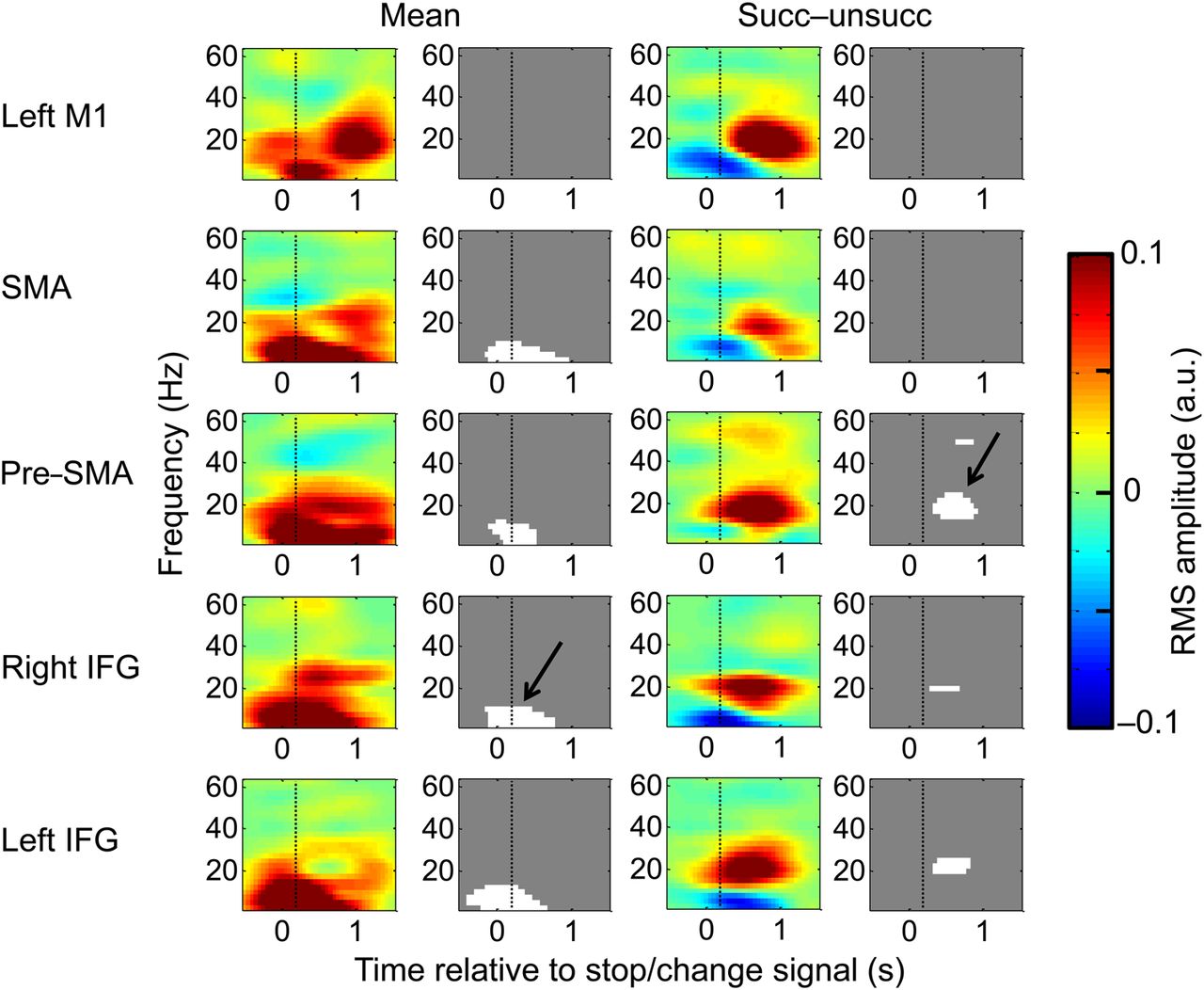The Frontal Control of Stopping.
The ability to stop or change a voluntary movement is a critical aspect of brain function. Here, we define some of the underlying brain circuits in healthy human subjects, and demonstrate how nerve-cell activity in this circuit changes over time and with behaviour.
Stopping is a critical aspect of brain function. Like other voluntary actions, it is defined by its context as much as by its execution. Its neural substrate must therefore reflect both. Here, we distinguish those elements of the underlying brain circuit that preferentially reflect contextual aspects of stopping from those related to its execution. Contextual complexity of stopping was modulated using a novel "Stop/Change-signal" task, which also allowed us to parameterize the duration of the stopping process. Human magnetoencephalographic activity and behavioral responses were simultaneously recorded. Whereas theta/alpha frequency activity in the right inferior frontal gyrus was most closely associated with the duration of the stopping process, earlier gamma frequency activity in the pre-supplementary motor area was unique in showing contextual modulation. These results differentiate the roles of 2 key frontal regions involved in stopping, a crucial aspect of behavioral control.
